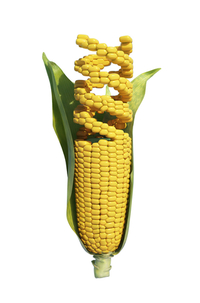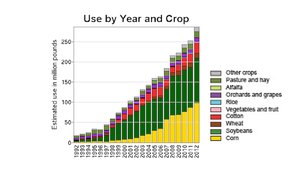GMO’S: THE EFFECT OF EMERGING TECHNOLOGIES
 In my last post, I uncovered some of the places genetically modified organisms are entering our world and permeating our very lifestyles. It is safe to say that the rapid advances of genetic engineering are transforming our daily lives sometimes unseen and mostly untested. What do we really know about their effects on the environment and our health? Some insist that the technology is safe and to stop being anti-science luddites. Others hold to the precautionary principle. Let’s take a look at some of the consequences being uncovered by scientists around the globe. Here is what we know:
In my last post, I uncovered some of the places genetically modified organisms are entering our world and permeating our very lifestyles. It is safe to say that the rapid advances of genetic engineering are transforming our daily lives sometimes unseen and mostly untested. What do we really know about their effects on the environment and our health? Some insist that the technology is safe and to stop being anti-science luddites. Others hold to the precautionary principle. Let’s take a look at some of the consequences being uncovered by scientists around the globe. Here is what we know:
Toxins are on the Rise
Agricultural Economist and scientist Chuck Benbrook has spent a good portion of his professional career studying the effects of agriculture, specifically GMO crops. In his 2012 study, “Impacts of genetically engineered crops on pesticide use in the U.S. — the first sixteen years,” he displays that the use of herbicides has increased dramatically since the inception of herbicide-tolerant varieties of corn and soy. This technology has led to a 527 million pound increase in herbicide use in the United States between 1996 and 2011. The U.S. Geological Survey (USGS) findings are similar. They indicate an increase from 20 million pounds in 1992 to more than 280 million pounds in 2012.

The most widely used herbicide by far is glyphosate, more commonly known as Roundup. In March 2015, the World Health Organization classified it as a probable carcinogen in humans. Since a good portion of Monsanto’s revenue is manifested from Roundup and the crops that are genetically altered to withstand its application, Monsanto immediately demanded a retraction. They don’t seem to care that Dr. Robin Mesnage and co-authors found that glyphosate herbicides may even be toxic, well below regulatory safety limits. This study indicates that endocrine disruption can occur, causing liver and kidney toxicity, neurotoxicity, carcinogenicity, reproductive toxicity, and teratogenicity (ability to cause birth defects). Those are all cities best avoided!
The USGS repeatedly finds glyphosate herbicides in most Midwestern streams. It’s been found in our urine, breast milk and in the organs of animals with birth defects. Because of its rampant use, especially here in the U.S., it is likely you or your family has glyphosate residues in your bodies.
Seeds are in Decline

Another little-known consequence of GMO technology is the effect it’s had on our seeds. Call it seed sovereignty or seed security. If people do not have the access and ability to save, breed and replant seeds, they have no real food security. Seed is the very basis of our food. When genetically modified entities are created, they are also patented by the companies that created them. In essence, those companies now own that specific life form. It becomes illegal to save, replant, cross breed or conduct research on those patented seeds and crops.
Consolidation in the seed and chemical industry has intensified. According to ETC Group’s “Putting the Cartel Before the Horse” news release, “…six multinational firms (Monsanto, DuPont, Syngenta, Bayer, Dow, and BASF) control 75% of all private sector plant breeding research, 60% of the commercial seed market (100% of the transgenic seed market) and 76% of global agrochemical sales.”
Unknown Consequences Loom
“Traditional” genetic modification involves inserting the DNA of one species into another. Now they are tinkering with novel and, for the most part, untested, methods, intentionally changing the RNA of an entity to turn off “undesirable” traits. No longer do they have to introduce foreign DNA, but by manipulating the RNA it can turn genes off, literally.
This technology is what makes the newly deregulated Arctic Apple stay pearly white for 15-18 days after it’s been sliced. Scientists used RNA and turned off the genes that naturally make the apple brown. The same technology was used to create Simplot’s non-browning potato.
 Companies are planning to engineer plants with double-stranded RNAs to kill pests when they eat that plant. There are also plans to make sprays that carry RNA into the cells of weeds. In the article, “Securing the safety of genetic modification,” the authors conclude, “We are concerned that what happens to pest insects and nematodes that eat these RNA molecules can also happen to other insects, wildlife and people. The risks of double-stranded RNA have not been systematically evaluated by any regulatory agency we know of, and there are no standard safety testing procedures.”
Companies are planning to engineer plants with double-stranded RNAs to kill pests when they eat that plant. There are also plans to make sprays that carry RNA into the cells of weeds. In the article, “Securing the safety of genetic modification,” the authors conclude, “We are concerned that what happens to pest insects and nematodes that eat these RNA molecules can also happen to other insects, wildlife and people. The risks of double-stranded RNA have not been systematically evaluated by any regulatory agency we know of, and there are no standard safety testing procedures.”
Another new and controversial genetic technology is a “genome-editing” technique called CRISPR. This technique lets researchers alter genetic sequences quickly and flexibly at will. One proposed use of CRISPR is to create ‘gene drives’ where a researcher creates genetic changes in an organism that is designed to more rapidly and deliberately spread through an entire population. In a few generations, much like a nuclear chain reaction, it is intended that the entire population of the species changes or can be wiped out entirely. The mutation is irreversible, and wild genes just can’t compete. To quote an article in the International Business Times, “…natural selection would be turned on its head and decisions made by some researchers could end up permanently rewriting the genomes of entire wild populations.”
While many of these emerging technologies may hold potential for combating pests, disease and many of the world’s woes, we do not have a good enough grasp on how they affect humans and the environment in the long term. It is said that it takes at least a full human generation to understand the implications of a new technology. Existing GMO technology has only been in commercial use since the 90’s, which isn’t long enough to fully understand its ramifications let alone the long-term effects on evolution. New technologies definitely need more assessment and regulation as they are introduced. The track record so far hasn’t been great for transgenic products as is apparent in the rise in toxins and the demise of our seeds.
For the sake of our planet and its inhabitants, it’s time we stepped back and did some due diligence before we race round the next technological turn.








Follow Us!